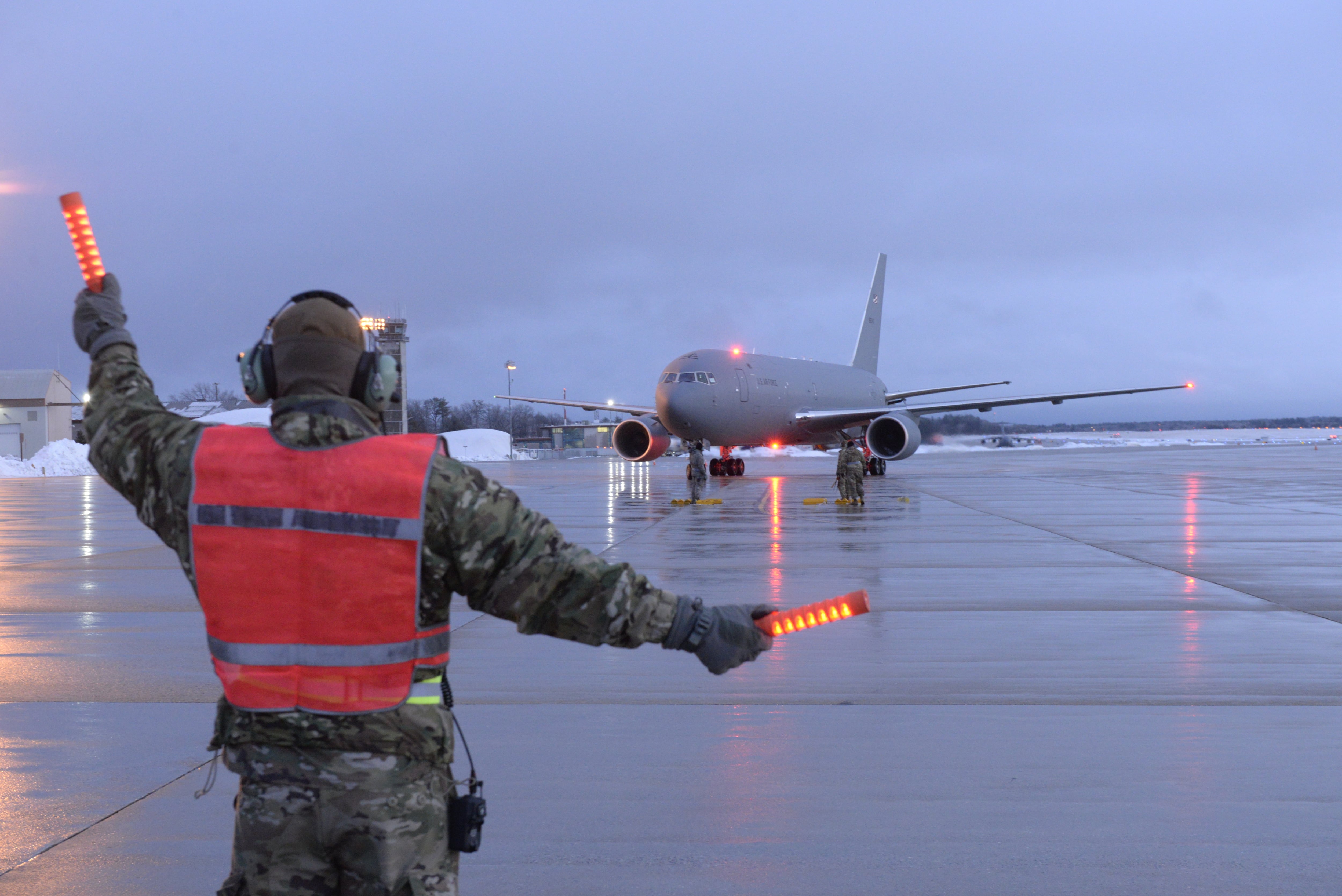WASHINGTON — Last week’s deal between Boeing and the U.S. Air Force on a fix for the KC-46 could pave the way for the tanker to refuel other aircraft without a person needed to manually control the process, a top service official said Thursday.
On April 2, Boeing agreed to fix the KC-46’s troubled Remote Vision System by creating an overhauled RVS 2.0 with new hardware and software. Air Force acquisition executive Will Roper told reporters those changes would include the addition of 4K high-definition cameras that will display imagery in color as well as modern processors and LiDAR (light detecting and ranging) sensors that will help improve depth perception.
“A proper RVS like that is right on the doorstep to autonomy,” Roper said. “All you have to do is take that data that tells the world inside the jet the reality of geometries between the airplane and the boom outside the jet. Once you have that, you simply need to translate it into algorithms that allow the tanker to tank itself.”
RELATED

The KC-46’s Remote Vision System has been a thorn in the side of the aircraft program since 2017, when issues with the system were first discovered. The RVS is basically a suite of cameras, sensors and software that is supposed to allow boom operators sitting inside the aircraft to safety steer the boom into the aircraft needing fuel. But in certain conditions, the system produces distorted imagery that increases the risk of the boom hitting another aircraft.
The new LIDAR system will be key to fixing that problem, said Roper, who likened it to a backup camera on a car that also provides cues to a driver for parallel parking or assessing whether a vehicle is aligned flush to a curb.
“We’ll have something very similar to that for the boom operators, so telling them are they left, right and how close are they getting to the airplane,” he said. “[It’s] something very intuitive and easy to work with, and I think that will help significantly with them understanding their distance [from the other aircraft] because LIDAR is extremely accurate.”
Because Boeing is locked into a firm fixed-price contract for the development of the KC-46, it will have to pay for the upgrade to RVS 2.0 out of its own pocket, as the Air Force maintains that the current system does not meet requirements.
But the service is so confident in the prospect of using the RVS 2.0 as a stepping stone to an autonomous tanker that it included an option in last week’s agreement to fund the development of technologies that enable autonomous or semiautonomous refueling.
“We have added an engineering change proposal into the deal with a not-to-exceed threshold of $55 million, so that when RVS 2.0 is done, we can then take the next step beyond 2.0 to develop those autonomy algorithms and install them if we think we can certify them for safe use,” Roper said.
“We took that step because, one, we’re excited about being on the doorsteps of autonomy and, [two], we wanted to send a clear signal in the deal that this is our tanker for the future,” he said.
If the Air Force decides to move forward with those design changes, more will need to be done to hammer out the contractual details, said Jamie Burgess, Boeing’s KC-46 program manager.
“There was no commitment one way or another on who pays for what. But there’s definitely a strong partnership between Boeing and the Air Force as far as developing this technology,” he said.
Autonomous refueling capability has been of increasing interest to the Air Force over the past few years, as sensing and artificial intelligence technologies grow by leaps and bounds. Boeing previously signaled it could include such technology as part of a menu of potential upgrade options for the KC-46, as reported by FlightGlobal in 2018.
Valerie Insinna is Defense News' air warfare reporter. She previously worked the Navy/congressional beats for Defense Daily, which followed almost three years as a staff writer for National Defense Magazine. Prior to that, she worked as an editorial assistant for the Tokyo Shimbun’s Washington bureau.





